Opioids

Opioids
Introduction
History of Opioids
Opium
People have used opioids for thousands of years, namely opium derived from the poppy plant Papaver somniferum. According to the U.S. Drug Enforcement Agency, people have harvested poppy plants for opium as early as 5000 BC.1 At that time, farmers would take un-ripened seed pods and cut into them with knives. The milky white fluid that escaped was then dried and used as opium.
Morphine
It wasn’t until the early 1800s that a German pharmacist named Friedrich Serturner started performing experiments to isolate different compounds in the poppy plant.2 After experimenting on himself and lab animals, Serturner was able to isolate the alkaloid compound in poppy plants that create pain-relieving effects. He called the compound morphine. Pharmaceutical manufacturers started to market the drug as a pain reliever, but it wasn’t until the late 1800s in the wake of the Civil War that morphine started becoming an increasing drug of addiction.
US Civil War
According to National Public Radio, morphine caused “soldier’s disease” as many soldiers returned from the Civil War reliant on morphine. Also, by the end of the 1800s, many women were reportedly addicted to morphine in the United States. One reason for this is that pharmacists would prescribe morphine readily to treat a number of health complaints, including menstrual cramping and coughing. In 1896, an estimated 500,000 million pounds of opium were imported into the United States.3
Narcotic Control Act
By the end of the 19th century, medical and government officials realized they had a full-fledged addiction epidemic. A person could even order a syringe of cocaine from the Sears & Roebuck catalog. In 1914, the U.S. government passed the Harrison Narcotic Control Act of 1914. This Act regulated and taxed importers of coca leaves and opium. The Act also regulated some of the prescribing power of doctors. For example, doctors could prescribe opium for pain, but not to opium addicts to further their addiction.
While the Act did start to increase regulations on drugs in the United States, it also marked the emergence of the black market for drugs. This resulted in illegal smuggling from Mexico and Canada into the United States.
Public Backlash to Opioids
Increased legislation on opium and cocaine created a sort of backlash from the media as to the use of opiates. According to the journal Pain and Therapy, people experienced “opoiphobia.” This means that doctors would discourage the use of opioids, saying that people who were reliant on them were abusers or suffered from mental illness. By the late 80s and early 90s, more research even from the World Health Organization found many patients (especially cancer patients) experienced under-treatment of their pain. In response to this, the American Pain Society launched its initiative, “pain is the fifth vital sign.” The regulating body for many hospitals (The Joint Commission) also launched standards for pain control. As a result, many hospitals were afraid they would lose funding if patient satisfaction scores reflected poor pain control.
These initiatives resulted in greater laxity on prescriptions, the creation of extended-release formulations of oxycodone, and more prescriptions for opioids. Pharmaceutical companies also mislabeled and marketed extended-release formulations of narcotics as safer when, in reality, they became more dangerous. Many years later, pharmaceutical companies would pay out in several lawsuits related to their marketing practices and medication safety.
Current Crisis
As a result, multiple factors led to the current opioid crisis in the United States. According to the National Institute on Drug Abuse (NIDA), the number of opioid prescriptions tripled in amount from 1991 to 2011. In 1991, doctors prescribed 76 million opioids. In 2011, they prescribed 219 million.4 The number of deaths from opioids nearly tripled during this period.
In addition to increased prescriptions, more illegal drug manufacturers produced more heroin. Heroin production in Mexico increased an estimated six-fold from the years 2005 to 2009 alone.
Unfortunately, marketing practices and increased emphasis on pain control caused opioid use to shift to a greater danger for those in the United States. Today there is increased legislation, scrutiny, and education toward the prescription and distribution of opioids. Ideally, this trend will continue and help those struggling with opioid use disorders.
Form and Function of Opioids
What Makes a Drug an Opioid?
The first opioids were derived from the poppy plant. Natural opioids come from this plant alone. However, scientists have discovered how to mimic the chemical structure and some of the poppy plant’s effects in the laboratory. Morphine and codeine are examples of opiates derived directly from the opium poppy. Some chemists derive opioids from poppy plants and then slightly alter their chemical structure. These are known as semi-synthetic opioids. Examples include heroin, hydrocodone, hydromorphone, and oxycodone.
Scientists consider opioids drugs that specifically work on opioid receptors in the body (the receptors are explained in the next section). Medications that activate these receptors have specific effects on the body, including changes in the perceptions of pain.
How Do Opioids Work?
Opioids work on a unique system of receptors in the body. These include the delta, kappa, and mu receptors. A person can naturally activate these receptors through pleasurable activities (such as sexual behavior or a runner’s high). Examples of the compounds that activate these receptors include dynorphins, endorphins, and enkephalins.
Scientists currently believe the mu-opioid receptors are responsible for most of the morphine’s analgesic (pain-relieving) properties.
Mu receptors are also responsible for many of the opioid’s addictive properties. These receptors are associated with the body’s natural rewards system and can make a person feel a sense of euphoria when using it. This can reinforce a person’s desire to use and re-use opioids.
In addition to mu receptors, opioids can activate delta receptors. Delta receptors are responsible for modulating emotional response. This can potentially further contribute to a person’s emotional attachment to opioids as an addictive behavior.
Kappa receptors are the last opioid receptor that scientists currently know affects the body. The medication methadone is known for working on kappa receptors in the body. Kappa receptors work on peripheral nerves to relieve pain.
Health Risks of Opioids
Opioids can have beneficial effects when used as prescribed. These include pain relief and to suppress coughs. However, excessive doses or using these medicines other than prescribed (such as snorting or injecting them) can lead to physical dependence, overdose, and death.
Signs a person has taken too many opioids include:
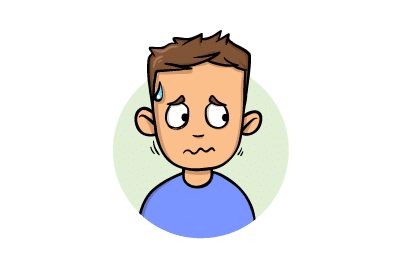
Constipation
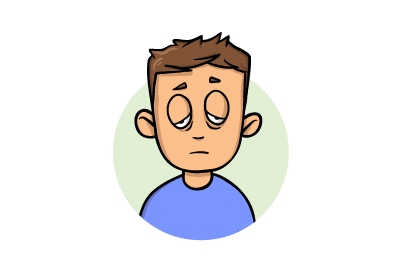
Constricted Pupils
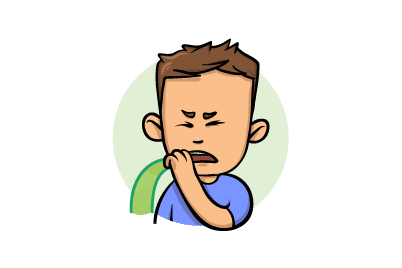
Nausea/Vomiting
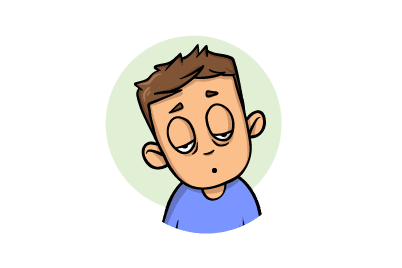
Slowed Breathing
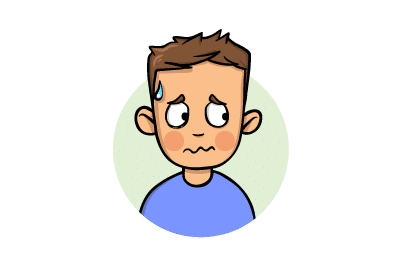
Facial Blushing
Opiates work on the brain and can signal functions such as slowed breathing when taken. If a person takes too much of an opioid, they can stop breathing altogether. This is why opioid drugs can prove deadly.
Over time with continued use, a person can start to develop a tolerance to the opioid. As a result, they may try to use more and more of the drug to achieve the same pain-relieving effect or high. This can lead to an increased risk of overdose.
In addition to the health risks of using opioids, there are increased risks if a person uses opioids intravenously. Examples of these health risks include infectious diseases such as HIV, hepatitis, and endocarditis, a severe infection of the heart valves.6
Opioid Withdrawal
According to NIDA, an estimated 772,000 people in substance abuse treatment were seeking help for prescription opioid addiction in 2014. This represents an estimated 18.6 percent of all people seeking addiction treatment in the United States. An estimated 618,000 people in rehabilitation were seeking treatment for heroin use.
If a person is addicted to or dependent on opioids, they will likely experience withdrawal symptoms if they decide to stop using. The possibility of withdrawal symptoms can sometimes deter a person from trying to quit. However, a person can seek withdrawal at a medical detox facility. There, they can stop using drugs or alcohol until their body is rid of a large amount of the substance.
While opioid withdrawal symptoms are not deadly, they are uncomfortable. The desire to return to their drugs of abuse can be so significant that a person may have difficulty completing the withdrawal process.
Early Withdrawal Symptoms
Examples of early withdrawal symptoms can include:
- Runny Nose
- Sweating
- Watery Eyes
- Yawning
In the hours that follow, a person can experience later opioid withdrawal symptoms. These include:
- Appetite Loss
- Blood Pressure
- Chills
- Flushing
- Irritability
- Nausea
- Restlessness
- Strong Cravings for the Drugs
- Tremors
- Vomiting
These physical symptoms will usually subside with time, usually several days or weeks. However, the cravings may continue in varying degrees for a lifetime.
Long-Term Withdrawal Management
The withdrawal period is necessary for a person to move forward with their treatments. For example, once a person has completed withdrawing, a doctor can discuss medication-assisted treatments. These treatments include medications such as Suboxone or methadone as a treatment for opioid addiction. Doctors can also prescribe medications for the treatment of alcohol addiction. Unfortunately, there are no medications to treat every kind of addiction.
In addition to medication-assisted treatments, doctors will usually recommend participating in psychotherapy. This includes psychiatric evaluation and regular therapy sessions on an individual and group basis. Some people may also participate in family therapy or alternative therapies. These include acupuncture, exercise, and hypnosis.
Once a person has passed the withdrawal period and participated in counseling sessions, a doctor may recommend further efforts to prevent relapse. This includes participation in 12-step programs such as Alcoholics Anonymous or Narcotics Anonymous. Through participation in these organizations, a person can receive long-term help and continually focus on their sobriety.
Which Drugs are Considered Opioids?
Illegal Drugs
Heroin
Common street names: Big H, black tar, Chiva, hell dust, horse, negra, smack, and thunder
Heroin is a fast-acting opioid processed from poppy plants grown in countries such as Mexico, Pakistan, Afghanistan, Thailand, and Myanmar. A person may abuse heroin by snorting it, smoking it, or injecting it. When a person abuses heroin, they experience a strong rush of euphoria that can be highly addictive.
The U.S Drug Enforcement Agency designates heroin as a Schedule I drug. This means the drug has no accepted medical use and has a high potential for abuse and addiction.
Unfortunately, those who use and are dependent on prescription opioids are at higher risks for heroin use. According to NIDA, the incidence of using heroin is 19 times higher in a person who has used non-medical pain relievers than when compared to a person who has not. NIDA also reports the three most common sources of opioids are family, friends, and personal prescriptions.
To better understand how opioid abuse culture is shifting, consider this statistic: in 1960, an estimated 80 percent of those in treatment for heroin started out abusing heroin. In the 2000s, an estimated 75 percent of people in rehabilitation for heroin reported using a prescription opiate before using heroin. However, the overall number of prescription opiate users who switch to heroin is usually less than 4 percent of all people who abused prescription opiates.
Opium
Common street names: Aunti Emma, big O, black pill, Chinese tobacco, dopium, God's medicine, dreams, Great Tobacco, Pen Yan, Skee, midnight oil, Ze, and Zero
Opium is the original opiate from which natural and synthetic formulations were derived. For thousands of years, people have smoked opium as a means to get high. People have also injected it intravenously or taken the medication in pill form. Some drug dealers will combine marijuana and opium to create “Buddha” for smoking. Another opium combination is marijuana, opium, and methamphetamines, which is called “Black.”
Some people describe an opium high as being similar to that of a heroin high. The opium works very quickly, especially when smoked.
While opium is illegal when used for recreational purposes, it Is legally produced in other countries and imported into the United States for use in making pharmaceuticals. Poppy growers extract the psychoactive chemicals from dried, mature poppy plants called poppy straw.
Prescription Opiates
The following are examples of prescription opiates that people may use legally or illegally. All can cause dependence and addiction.
Codeine
Common street names: Captain Cody, Cody, little C, school boy (when mixed with soda), purple drank, sizzurp, or Texas tea
The FDA approved codeine use in the United States in the 1950s.7 The drug is directly derived from the poppy plant, much like morphine. The medication relieves pain, causes sedation, slows intestinal movement, and reduces coughing. However, codeine isn’t as strong a pain reliever as morphine or other narcotics.
Codeine is commonly incorporated into cough medicines because of its powers to reduce coughing. The medication reduces the cough reflex in the body by acting on the medulla in the brain. Today, some people mix codeine cough syrup with soda.8 They may call this “purple drank.”
Fentanyl
Common street names: Apache, China Girl, China Town, dance fever, friend, goodfellas, great bear, He-Man, jackpot, king ivory, murder 8, and Tango & Cash
Brand names: Actiq, Duragesic, Fentora, Abstral, Sublimaze, and Onsolis
According to the U.S. Drug Enforcement Agency, doctors discovered fentanyl in 1959. The drug was further synthesized as an IV medication in the 1960s. Fentanyl is highly potent, an estimated 100 times more powerful than morphine and 50 times more powerful than heroin as a painkilling medication.
Fentanyl is manufactured legally and diverted. Secret and illegal laboratories also make fentanyl that is usually sold as a powder or tablet. Drug dealers also use fentanyl to mix it with heroin or cocaine to increase the drug’s potency. Unfortunately, this can lead to increased risks for overdose.
Hydrocodone
Common street names: Fluff, hydros, v-itamin, vike, and Watson-387
Brand names: Vicodin, Lortab, Lorcet-HD, Hycodan, and Vicoprofen
Hydrocodone is a narcotic, pain-relieving medication doctors prescribe for pain relief for moderate to severe pain. According to the U.S. Department of Justice, doctors prescribe hydrocodone more than any other opiate in the United States.9 An estimated 83.6 million prescriptions for hydrocodone were issued in 2017 in the United States. Hydrocodone is also the second-most submitted drug to evidence in the country’s forensic laboratories.
Hydrocodone and Acetaminophen
Pharmaceutical manufacturers combine hydrocodone with acetaminophen to increase the effectiveness of the medication and extend its duration. Unfortunately, those who abuse this combination are subject to liver damage due to excessive acetaminophen use.
Hydromorphone
Common street names: D, dillies, dust, footballs, juice, and smack
Brand names: Dilaudid, Exalgo
Hydromorphone is a strong opioid that is eight times more powerful than morphine. The U.S. Drug Enforcement Agency classifies it as a Schedule II drug, meaning it has medical uses, but also has a high potential for abuse. It is fast-acting and also longer-lasting than fentanyl.
Meperidine
Brand name: Demerol
Meperidine is a synthetic opioid created in a laboratory.10 Doctors prescribe it to treat moderate to severe pain, coughing, and muscle spasms. Demerol is like morphine in that the body breaks it down into a more active compound that doctors call a metabolite. Too much of meperidine’s metabolite can cause seizures. For this reason, doctors rarely prescribe meperidine to treat pain in people who have had a seizure before.
Doctors don’t usually prescribe meperidine for the treatment of long-term pain. Instead, the medication is often used in the post-operative period to relieve pain and reduce the incidence of shivering.
Methadone
Common street names: Amidone, chocolate chip cookies, fizzies, Maria, Pastora, Salvia, street methadone, and wafer
Methadone is a completely synthetic or human-made opioid. The medication is available as 5 milligram and 10-milligram tablets. In 2008, methadone manufacturers agreed to sell 40-milligram methadone tablets only to hospitals and facilities who were medically licensed for opioid treatments.
While methadone has some pain-relieving effects, it does not work on the same pathways as morphine and heroin in some respects. Namely, it does not create the same euphoric high that a person who is abusing medications like morphine and heroin. As a result, doctors started to prescribe it as a means to help a person stop abusing other opioids. Transferring from heroin to methadone allows a person to use a legal substance that can help them start to taper their dosages and ultimately reduce their dependence on opioids overall.
Sometimes, methadone can be a longer-term pain-relieving option for those with chronic pain who don’t wish to take traditional opioids. However, methadone can lead to overdose if a person takes excessive amounts. A person can also experience a number of side effects from methadone use, which is why doctors must monitor a person who is using it regularly.
Morphine
Common street names: Dreamer, Emsel, first line, God's Drug, hows, M.S., mister blue, Morf, Morpho, and Unkie
Brand and generic names: MS-Contin, Oramorph SR, MSIR, Roxanol, Kadian, and RMS
Morphine is a non-synthetic opioid that pharmaceutical manufacturers derive from opium poppies. The medication has many formulations that can range in how long they last. Doctors commonly prescribe this medication to treat chronic, post-surgery, and cancer pain. However, the drug has a high potential for abuse.
Oxycodone
Common street names: Hillbilly heroin, kicker, OC, Ox, Roxy, Perc, and Oxy
Brand names: OxyContin, Oxaydo
Oxycodone is a common drug of abuse in the United States. Pharmaceutical companies and illegal laboratories make oxycodone from thebaine, which is a part of the poppy plant.
Oxycodone and Acetaminophen
Sometimes, pharmaceutical manufacturers will combine oxycodone and acetaminophen together. This helps to extend the effects of oxycodone as well as improve the medication’s pain-relieving effects. Oxycodone and acetaminophen together is marketed as Roxicet while oxycodone and aspirin is marketed as Percodan.
Oxycodone and Naloxone
Brand name: Targiniq ER
Pharmaceutical manufacturers have combined the medications oxycodone and naloxone into one pill ideally to reduce the risks for opioid abuse. While oxycodone is a pain-relieving medicine, naloxone blocks some of the euphoric effects associated with opioid use. Ideally, this combination will help to reduce the number of people who have become dependent on narcotics for their pain relief.
Rehabilitation Helps Opioid Addiction
Opioid abuse is not a new phenomenon in the United States. However, abuse and misuse of opioids has continued to prove deadly for hundreds of years. If a person is addicted to opioids, there are many rehabilitation programs that can help a person go through the detoxification process and receive treatments that can help them experience long-term sobriety.
Resources
- https://www.dea.gov/sites/default/files/2018-06/drug_of_abuse.pdf
- https://www.npr.org/2019/04/04/709767408/a-history-of-opioids-in-america
- https://www.ncbi.nlm.nih.gov/pmc/articles/PMC5993682
- https://www.sciencedaily.com/releases/2007/10/071014163647.htm
- https://www.healthline.com/health/opioids-and-related-disorders#symptoms
- https://www.drugabuse.gov/publications/research-reports/relationship-between-prescription-drug-abuse-heroin-use/introduction
- https://www.drugbank.ca/drugs/DB00318
- https://medlineplus.gov/ency/patientinstructions/00079.htm
- https://www.deadiversion.usdoj.gov/drug_chem_info/hydrocodone.pdf
- https://www.accessdata.fda.gov/drugsatfda_docs/label/2011/005010s050lbl.pdf














